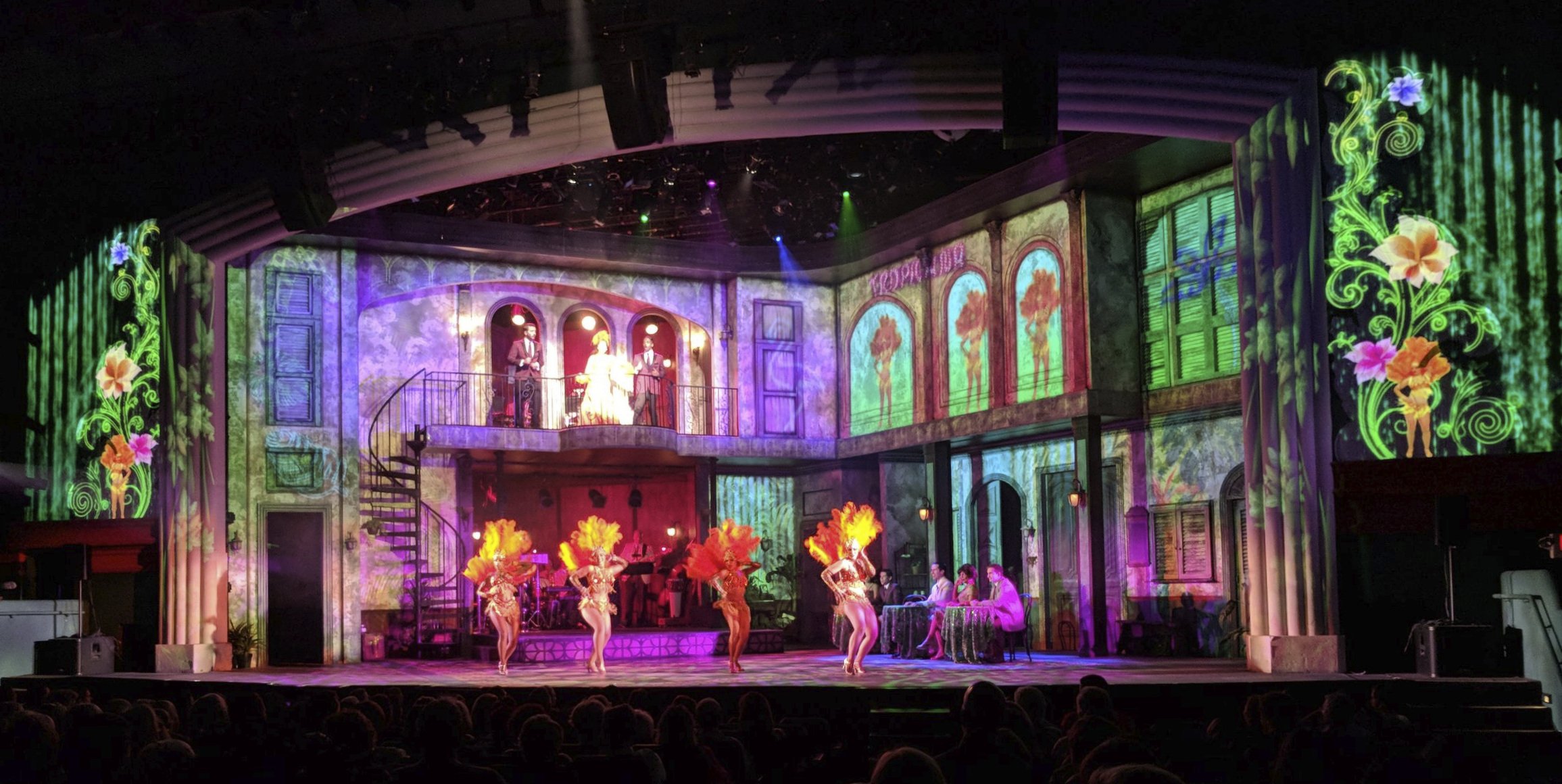The Art of Projection Mapping and Illumination: Transforming Spaces
In the realm of visual arts and design, two techniques stand out for their transformative power: projection mapping and lighting. While projection mapping mesmerizes with its ability to bring objects and spaces to life utilizing transformative 3D animations and video, lighting sets the stage by enhancing the visual environment. We often have clients requesting projection mapping who are actually describing a simpler lighting effect such as using gobo’s for shapes or patterns. Other times, after an initial creative discussion, they are looking for transformative effect of 3D mapping.
In this blog post, we will explore the captivating world of projection mapping and the enchanting artistry of lighting. Join us as we delve into the distinctive features, and the differences including content design, animation, and immersive effects of these artistic techniques.
Precision Mapping: Projection mapping begins with meticulous mapping, aligning projected content with the contours, textures, and geometry of the target surface. Through specialized software, artists achieve a seamless integration between the physical and digital worlds, resulting in a captivating visual marriage.
Illusion of Movement and Depth: By combining projected imagery with the physical features of objects or spaces, projection mapping creates an illusion of movement, depth, and transformation. Surfaces come alive as animations unfold, captivating viewers and transporting them to an immersive realm of dynamic visuals.
Content Design and Animation: Unleashing Creativity: In projection mapping, content design and animation are essential for crafting immersive experiences.
Customized 3D Animation and Video: Artists craft or adapt 3D animations and video content specifically tailored to the object or building being mapped. This content ranges from abstract visuals to intricate storytelling narratives, breathing life into surfaces and captivating audiences. The image below is from Havana Music Hall, projection design by Jenni Ogden & Jeff Klein, Eye Q Productions, is an example of 3D projection design as a storytelling aspect for live theater.
Seamless Integration with the Environment: Projection mapping seamlessly integrates projected content with the environment, enhancing the overall experience. The visuals align with architectural details, respond to surrounding objects, and create a cohesive visual narrative that engulfs viewers in a captivating ambiance. The addition of live performance with projection design and sculpted lighting design can enhance live theater, concerts and events dramatically.
Lighting: Shaping the Visual Environment Lighting is a fundamental aspect of visual arts, enhancing and manipulating the environment to create desired effects. Let's explore the key aspects of lighting:
Illumination and Atmosphere: Lighting focuses on illuminating objects or spaces to highlight specific elements and create desired atmospheres. Strategic placement, direction, intensity, and color of light sources shape the visual environment and evoke emotions. Lighting finds its power and impact through the juxtaposition and contrast of both light and shadow. What is NOT lit is as important than what IS lit. This helps to give a subject depth and texture. The natural contours if the subject being lit can be used to create a strong visual impact depending on the angle of the light. The image below is a dramatic example of the art of illumination in the Rivers of Light at Animal Kingdom, lighting design by Ryan Gravilla, one of our favorite lighting designers to work with.
Dynamic Effects: Lighting design encompasses dynamic effects like dimming, fading, color changes, and moving lights. These effects inject movement and intrigue, adding depth and visual interest to scenes and environments.
A gobo is a stencil insert placed on a light, and plays a significant role in lighting, projecting patterns, textures, or scenic elements onto surfaces. They add depth, texture, and custom imagery, further enhancing the visual impact and immersing viewers in captivating spaces.
Conclusion: Projection mapping and lighting are powerful artistic techniques that redefine the way we experience visual environments. Projection mapping breathes life into surfaces, utilizing precise mapping, 3D animation, and interactive elements to transport viewers into immersive realms. Lighting, on the other hand, shapes the visual environment, using strategic illumination, dynamic effects, and gobos to enhance scenes and evoke emotions. Embrace the possibilities offered by these artistic techniques, and allow us to unlock your creativity to captivate audiences with awe-inspiring visual mastery.
Jenni Ogden
President, Executive Producer
Eye Q Productions, LLC
Jenni Ogden is an entertainment and technology trailblazer, always inspired to explore the latest technologies to empower immersive design and storytelling in both live and virtual worlds.


